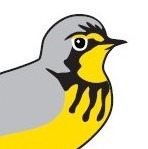By Ellen Jakubowski, Communications Specialist, Bird Studies Canada

Sixteen bird species are vying for the chance to represent North America in the Twitter World Cup of Birds. A big thank-you to all who voted in the first round, narrowing down the field from an original list of 32 species that breed only in, or predominantly in, Canada, the U.S. (including Hawaii), and/or Mexico. It’s been great seeing biologists, birders, and bird fans of all stripes rally in support of their favourites!
To join the action now, follow @BirdStudiesCan and the #TWC_Birds_NAmerica hashtag, and vote in round two (eight Twitter polls between May 29 and the end of June). The eight winners from round two will go on to compete with bird champions from around the world!
The Twitter World Cup of Birds (#TWC_Birds) is a friendly international competition hosted by the British Ornithologists’ Union. Its goal is to get people voting, tweeting, and learning about some of the world’s most remarkable birds – many of which are species of conservation concern.
To help you decide which species to support in round two, here are some fast facts about the first eight (out of 16) North American contenders:
- Wood Thrush: This forest-dwelling species can produce two notes at the same time, giving its song an iconic and beautiful character. Most of its population breeds in eastern Canada or the eastern U.S. and winters in Mexico or Central America. Unfortunately, the Wood Thrush is declining across much of its range.
- Red-headed Woodpecker: Its striking looks make this species easy to identify. The male and female Red-headed Woodpecker look alike, which is not the case for many other familiar woodpeckers. This species ranges across central and eastern Canada and the U.S. Its population is declining, and it was recently reassessed as Endangered in Canada.
- Tufted Puffin: This hardy bird can make itself at home in a wide range of climatic conditions, and travel long distances over the north Pacific. When breeding, Tufted Puffins gather in colonies along sea cliffs. They are vulnerable to introduced mammalian predators because they nest in burrows, and can also become bycatch due to fishing activities.
- Laysan Albatross: The Laysan Albatross is small relative to other albatross species. But, it is still large given that its wingspan is around two metres. It breeds mainly in the Hawaiian Archipelago and ranges widely across the north Pacific the rest of the year. A celebrity of this species named Wisdom is the world’s oldest known breeding bird, at 67 years old!
- Piping Plover: This shorebird breeds in Canada and the U.S. on the northern Great Plains, the shores of the Great Lakes, and the Atlantic coast. In winter, it may be spotted in the southeastern U.S., Mexico, and the Caribbean. The Piping Plover is a rare species threatened with extinction. Fortunately, conservation efforts are being driven by dedicated people and organizations.
- American Kestrel: Cute but fierce, this species is the smallest and most widespread falcon in North America. It sports colourful rufous and blue feathers, and the sexes are easily distinguished from each other. This pint-sized predator can be found in open areas, including agricultural land and parks. You’ve probably seen one perched on a power line!
- Tree Swallow: This widespread aerial insectivore breeds in Canada and the U.S. and winters in the southern U.S., Mexico, Central America, and the Caribbean. As its name suggests, it tends to nest in tree cavities. It will also readily occupy nest boxes. While it is not yet considered a species of conservation concern, Tree Swallow numbers are declining.
- Painted Bunting: The adult male Painted Bunting looks like a flying bag of Skittles! This flashy finch breeds in the south-central and southeastern U.S. and in northern Mexico. It winters in Florida, Mexico, Central America, and the Caribbean. The adult birds are sometimes illegally caught for the pet trade, putting pressure on the declining population.
Stay tuned to learn about the other eight species competing in round two!


